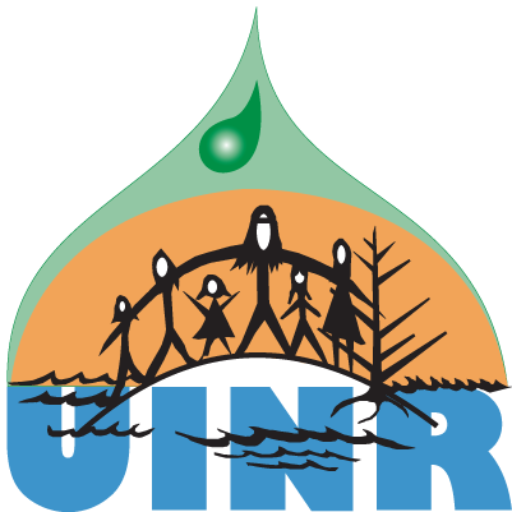New science projects at UINR
It is going to be a busy year for UINR! We recently received support from Aboriginal Funds for Species at Risk to continue our eel research in the Bras d’Or Lakes. The project will determine biological characteristics and the relationship of American Eel (Kataq) abundance in the Bras d’Or Lakes. We will be conducting eel and elver habitat surveys, gathering biological data and landing estimates from the food, social and ceremonial eel fishery. We are expanding sampling to include freshwater rivers and lakes and barrachois ponds for eels.
Our research will include discussions with Elders and eel fishers on eel ecology in freshwater and fishing efforts by habitat type and season. We will establish a timeline for when the swimbladder parasite appeared in the Bras d’Or Lakes eel which will help provide a traditional balance to our research.
UINR is proud of our unique approach to sample collection for research. Eels are obtained fresh, processed for the required data, then cleaned and skinned so that they can be returned to the fisher. To date, around 80% of eel samples have been returned for consumption or communal sharing. If they do not want the eels, samples are frozen and given to those who want a small feed of eels.
UINR also received funding to develop best management practices for shoreline development with our Mi’kmaw communities. These guidelines will provide protection for the near-shore region used by eels. Shelley Denny, UINR’s Biologist and Research Coordinator explains: While we have constitutionally protected rights for food, social and ceremonial fishing, and now the right to fish for a moderate livelihood, we cannot forget our responsibility to the eel and the environment that nourishes it. I see this development as a pro-active approach to eel conservation by way of habitat protection. Having these standards in place for the Bras d’Or Lakes will be the first of its kind in Nova Scotia.
This area is an important habitat for many other species such as oysters, mussels, juvenile fish, and as spawning areas for herring. Denny acknowledges the work of the Bras d’Or Lakes Collaborative Environmental Planning Initiative for researching shoreline protection measures that are commonly used in other provinces and their potential application for our region: CEPI put together a useful document to help us help ourselves. I think the time is right to pursue this issue and we are doing this in collaboration with others around the Bras d’Or Lakes. I am confident our efforts will have a positive impact on the health of the Lakes and I’m very excited to be part of this process. UINR is meeting with member communities to confirm their participation. Funding for this project was provided through Environment Canada’s Habitat Stewardship Protection program.
shelley.denny@uinr.ca
It is going to be a busy year for UINR! We recently received support from Aboriginal Funds for Species at Risk to continue our eel research in the Bras d’Or Lakes. The project will determine biological characteristics and the relationship of American Eel (Kataq) abundance in the Bras d’Or Lakes. We will be conducting eel and elver habitat surveys, gathering biological data and landing estimates from the food, social and ceremonial eel fishery. We are expanding sampling to include freshwater rivers and lakes and barrachois ponds for eels.
Our research will include discussions with Elders and eel fishers on eel ecology in freshwater and fishing efforts by habitat type and season. We will establish a timeline for when the swimbladder parasite appeared in the Bras d’Or Lakes eel which will help provide a traditional balance to our research.
UINR is proud of our unique approach to sample collection for research. Eels are obtained fresh, processed for the required data, then cleaned and skinned so that they can be returned to the fisher. To date, around 80% of eel samples have been returned for consumption or communal sharing. If they do not want the eels, samples are frozen and given to those who want a small feed of eels.
UINR also received funding to develop best management practices for shoreline development with our Mi’kmaw communities. These guidelines will provide protection for the near-shore region used by eels. Shelley Denny, UINR’s Biologist and Research Coordinator explains: While we have constitutionally protected rights for food, social and ceremonial fishing, and now the right to fish for a moderate livelihood, we cannot forget our responsibility to the eel and the environment that nourishes it. I see this development as a pro-active approach to eel conservation by way of habitat protection. Having these standards in place for the Bras d’Or Lakes will be the first of its kind in Nova Scotia.
This area is an important habitat for many other species such as oysters, mussels, juvenile fish, and as spawning areas for herring. Denny acknowledges the work of the Bras d’Or Lakes Collaborative Environmental Planning Initiative for researching shoreline protection measures that are commonly used in other provinces and their potential application for our region: CEPI put together a useful document to help us help ourselves. I think the time is right to pursue this issue and we are doing this in collaboration with others around the Bras d’Or Lakes. I am confident our efforts will have a positive impact on the health of the Lakes and I’m very excited to be part of this process. UINR is meeting with member communities to confirm their participation. Funding for this project was provided through Environment Canada’s Habitat Stewardship Protection program.
shelley.denny@uinr.ca

